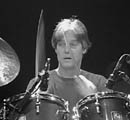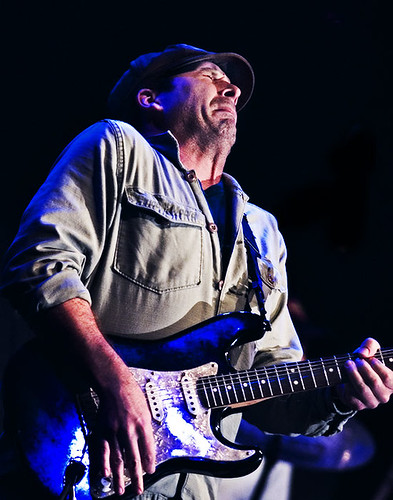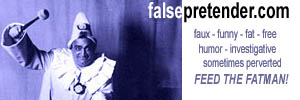Considerable Sounds: In Celebration Of Motown and Randy Newman's Songbook
 Berry's family had been Georgia farmers who migrated to Detroit. Berry was a boxer and won nine out of his15 fights, however his boxing career was shortened by the draft board. After serving in the U.S. Army in Korea, Berry returned to Detroit opening a record store, "3-D Music" which featured Jazz recordings. Unfortunately this business was not successful. He worked for his father during the day and later worked in the Ford Automotive Plant. Barry spent his evenings in jazz clubs. Finally, Berry Gordy III, born on this day in 1929, found his muse. He began writing songs.
Berry's family had been Georgia farmers who migrated to Detroit. Berry was a boxer and won nine out of his15 fights, however his boxing career was shortened by the draft board. After serving in the U.S. Army in Korea, Berry returned to Detroit opening a record store, "3-D Music" which featured Jazz recordings. Unfortunately this business was not successful. He worked for his father during the day and later worked in the Ford Automotive Plant. Barry spent his evenings in jazz clubs. Finally, Berry Gordy III, born on this day in 1929, found his muse. He began writing songs.For three years he wrote for the Golden Gloves champion he had once worked out with, Jackie Wilson. The songs he wrote for Wilson became hits and included Reet Petite, That is Why (I Love You So), I’ll Be Satisfied and Lonely Teardrops. Berry invested the money he made as a songwriter into producing records. In 1957 he discovered Smokey Robinson and The Miracles and began building a portfolio of successful artists. In January 1959 Gordy founded an R&B label called Tamla Records, which produced Marv Johnson's first hit, "Come To Me." At Robinson's encouragement, Gordy created Motown on December 14, 1959. Berry started Jobete Music Publishing, the Hitsville U.S.A. recording studio, International Talent Management and of course the Motown Record Corporation. The corporation’s first release was The Miracles’ Way Over There Barrett Strong's "Money (That's What I Want)," and The Miracles' hit "Shop Around" peaked nationally at #1 on the R&B charts in late 1960 and at #2 on the pop charts in early 1961 and established Motown as a major independent company.
As remarkable as the list of artists is, the artists alone were certainly one of many ingredients in the Motown stew. Motown’s staff songwriting and production teams (e.g., Holland-Dozier-Holland, a songwriting and production team made up of Lamont Dozier and brothers Brian Holland and Edward Holland, Jr.. The trio wrote and arranged many of the songs that dominated American popular music in the 1960s. During their tenure at Motown Records from 1962-1967, Dozier and Brian Holland were the composers/producers for each song, and Eddie Holland wrote the lyrics and arranged the vocals.) and in-house musicians (including such unsung heroes as bandleader/keyboardist Earl Van Dyke and bassist James Jamerson) contributed immeasurably to the Motown sound. The idea of a self-contained operation exuding soul from its every pore was all part of Gordy’s grand design. And today we say thank you to all involved.
Today is also Randy Newman's birthday.
" Ultimately, I want reach more people. That's what I've intended all my life even though it may not seem that way." -Randy Newman
Happy Birthday to one of America's greatest songwriters. Newman is the contemporary equivalent of Irving Berlin and Aron Copeland as well as one of the most prolific film composers of our time. Long ago Randy established himself as one of the sharpest and most caustic wits of our time. If you buy no other CDs this year at least treat yourself to the excellent retrospective:
"The Randy Newman Songbook, Vol. 1", Newman's most familiar material is here appearing in a fresh, flattering light. The result is perhaps a pure distillation of the intelligent and unflinching artistry that makes Newman so unique and worthy of a serious retrospective.
One of Newman's most iconic and recognizable works is the central theme to The Natural, a dramatic and Oscar-nominated score, which I have always found absolutely magical. Newman's work as a film composer began in 1971, scoring Norman Lear's satire Cold Turkey. He returned to film work with 1981's Ragtime, for which he was nominated for two Academy Awards.
He scored the first four Disney/Pixar feature films; Toy Story, A Bug's Life, Toy Story 2, and Monsters, Inc. He also scored the 1996 film James and the Giant Peach and the 2006 Disney/Pixar film Cars.
Additional scores by Newman include Avalon, Parenthood, Seabiscuit, Awakenings, The Paper, Overboard, Meet the Parents, and its sequel, Meet the Fockers. His score for Pleasantville was an Academy Award nominee. He also wrote the songs for Turner Productions's Cats Don't Dance.
Randy had the dubious distinction of receiving the most Oscar nominations (fifteen) without a single win.
This changed when he received the Oscar for Best Song in 2001 for the Monsters Inc. song "If I Didn't Have You", beating Enya and Paul McCartney for the honor..
After receiving an enthusiastic standing ovation, the bemused but noticeably emotional Newman began his acceptance speech with "I don't want your pity!"
Randy Newman is currently writing the music for an upcoming Walt Disney movie called The Princess and the Frog, which is scheduled for release in 2009.
Also on this day in 1974 John Lennon appeared in concert for the last time -- at NYC’s Madison Square Garden. Lennon joined Elton John to sing Whatever Gets You Through the Night as well as I Saw Her Standing There.
It's also Paul Schaffer's Birthday, Happy Birthday Paul.
Billboard lists their chart toppers for this day, November 28 as:
1951
Sin (It’s No) - Eddy Howard
Because of You - Tony Bennett
And So to Sleep Again - Patti Page
Slow Poke - Pee Wee King
1959
Mack the Knife - Bobby Darin
Mr. Blue - The Fleetwoods
Deck of Cards - Wink Martindale
Country Girl - Faron Young
1967
Incense and Peppermints - Strawberry Alarm Clock
The Rain, the Park & Other Things - The Cowsills
Daydream Believer - The Monkees
It’s the Little Things - Sonny James
Fly, Robin, Fly - Silver Convention
The Way I Want to Touch You - Captain & Tennille
Rocky - Dickey Lee
1983
All Night Long (All Night) - Lionel Richie
Say Say Say - Paul McCartney & Michael Jackson
Uptown Girl - Billy Joel
Holding Her and Loving You - Earl Thomas Conley
1991
When a Man Loves a Woman - Michael Bolton
Set Adrift on Memory Bliss - PM Dawn
That’s What Love is For - Amy Grant
Shameless - Garth Brooks
Those were the days, my friend. We thought they’d never end...
If you don't C sharp you'll B flat.
on perhaps the world's longest instrument.
Duly Consider and Considerable Sounds are TM of this publication and are subject to liabilities thereof














 The Scandalous Stravinsky And Nijinsky
The Scandalous Stravinsky And Nijinsky The set was painted by Nicholas Roerich.
The set was painted by Nicholas Roerich.

